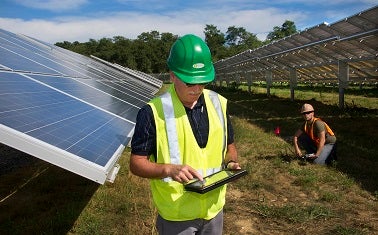Flexible Pollution Rules can Boost the Economy: 5 Reasons Why
By Diane Munns, Senior Director, Clean Energy Collaboration

Nobody likes being told what to do.
Gina McCarthy, head of Environmental Protection Agency, knows that. So she asked her agency to craft a plan that leaves it up to states to shape their energy future – as long as they cut carbon emissions from power plants.
Often lost in the heated debate over EPA’s Clean Power Plan, however, is the fact this built-in flexibility will also give a boost to clean technology ventures, and speed up energy innovations already under way in many states. It could bring down costs for consumers, and maybe even give a much-needed boost to our economy.
Here’s how.
1. Flexibility will foster creativity.
All states have different strengths and weaknesses, and their infrastructure varies. Under EPA’s plan, a state can choose to close or upgrade coal plants, join a carbon market such as the Regional Greenhouse Gas Initiative, invest in zero-carbon renewable energy sources, boost energy efficiency programs, or take any other step to meet the individual goal EPA set for the state.
Chances are, many state strategies will be multi-pronged and collaborative. The best and most viable solutions will surface to the top and be exported as best practices to other states. In fact, states and utilities looking to get ahead of the game are already beginning the discussions needed to one day craft plans.
2. State plans can be tweaked and improved over time.
States have 15 years to meet their individual carbon reduction goals. This is not supposed to be a rush job, no matter how urgent the climate challenge.
So a state that needs to abandon plans for a certain new technology, or that wants to switch to a more affordable solution, will likely have time to do so. The long-term planning horizon will allow new technologies and business models to be tested and take hold.
3. As old plants close, new and cost-effective technologies move in.
The EPA rules are being proposed at a time when utilities nationwide are pondering how to best replace aging infrastructure. Three-quarters of all coal-fired power plants are at least 30 years old, which means they only have about a decade left to operate.
This transition is expected to speed up over the next few years as a 2015 deadline for reducing mercury emissions and other harmful pollutants from power plants draws near.
With carbon storage still out of reach, no off-the-shelf technology available to affordably cut pollution from coal plants – and with natural gas, a fossil fuel, not a long-term viable alternative – we expect utilities to increasingly turn to renewable generation and energy efficiency solutions to meet EPA’s goals.
Energy efficiency remains the single best value for the dollar and it can easily be deployed within the 15-year timeframe.
4. A changing energy landscape will bring new business.
As zero and low-carbon technologies become more valuable and competitive over time, there will be more opportunities for companies to move into this space – and to flourish.
For years already, utilities have been switching from coal to natural gas, a cleaner and cheaper fuel that emits about half the carbon coal does. Industry analysts expect this transition to speed up in anticipation of the new power plant rules.
As state regulators push utilities to comply with the EPA emissions targets, look for new opportunities for industry and entrepreneurs to reduce emissions and improve efficiencies at natural gas plants.
Other businesses will scale up investment in alternative energy sources as the market for such technology gains value and broadens. There are already many active players in this emerging industry, and they want to grow in the United States and beyond.
5. Coming: A new way to produce and consume energy.
States working to cut emissions from fossil plants will be exploring new approaches – not just for energy production, but also for how we consume energy. There is “low-hanging fruit,” untapped opportunities for carbon reduction and customer savings, that won’t require additional power plant investments.
Expect EPA’s plan to fuel smarter utility business models where power companies are rewarded for helping consumers save energy rather than wasting it. The environment will benefit, as will American households and businesses.
This post originally appeared on our EDF Voices blog.












